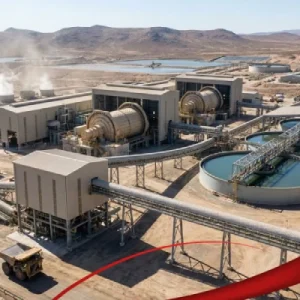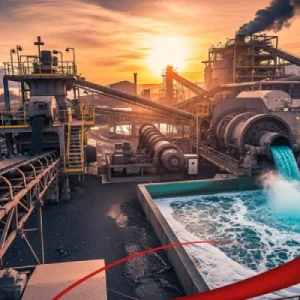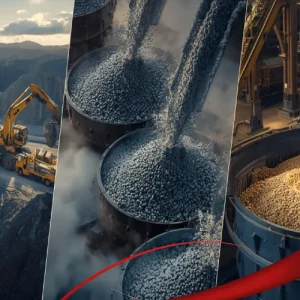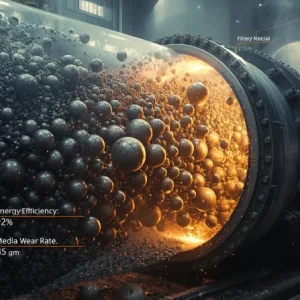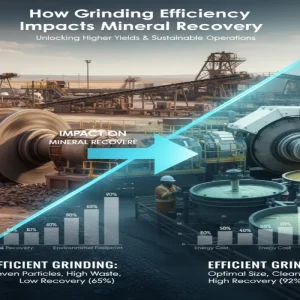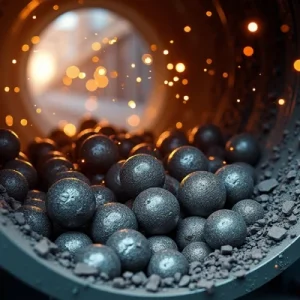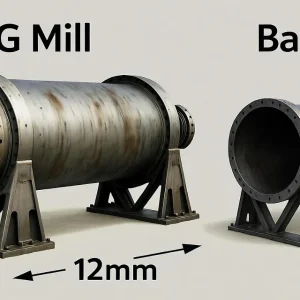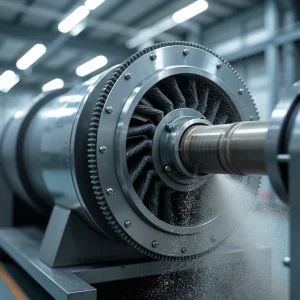In the extraction industry, the mine site, itself the open pit or underground workings, often captures the public imagination. However, for industry professionals, the true economic realization of a mining project occurs downstream, within the complex industrial facility known as the Mineral Processing Plant. Extracting Run-of-Mine (ROM) ore from the earth is merely the preliminary...
Category: <span>article</span>
From Mine to Mill: The Journey of Ore
Ore, the raw material buried deep within the earth, holds the promise of metals that power modern life—from the steel in bridges to the copper in wiring. The process of transforming this unrefined rock into usable minerals is a fascinating journey that begins in the depths of a mine and ends at the mill, where...
Understanding the Grinding Stage of Ore Processing
The grinding stage of ore processing stands as one of the most vital and demanding phases in mineral beneficiation. This process reduces coarse ore fragments into finer particles suitable for separation methods. Without proper grinding, valuable minerals stay trapped within waste material, lowering recovery rates.Today’s mining operations focus heavily on improving this stage. Grinding consumes...
Introduction to Comminution in Mineral Processing
Comminution in mineral processing is a crucial step in the mining and extraction of valuable minerals. It refers to the process of breaking down ore into smaller, manageable particles to liberate minerals from the surrounding gangue. Without effective comminution, subsequent processing methods like flotation, gravity separation, and leaching cannot operate efficiently. In fact, comminution often...
The Essential Role of Grinding Media in Comminution
The process of comminution, or particle size reduction, forms the energetic backbone of countless industries, from mining and cement production to pharmaceuticals and fine chemicals. Achieving the desired particle size—the fineness required for subsequent separation, reaction, or application—is directly dependent on the efficiency of the milling circuit. At the heart of this circuit, acting as...
How Grinding Efficiency Impacts Mineral Recovery
Imagine a mining operation where every ounce of valuable mineral counts, yet up to 20% of potential recovery is lost due to suboptimal processes. In the world of mineral processing, grinding efficiency stands as a pivotal factor that can make or break the success of extracting precious resources from ore. Grinding, the process of reducing...
Grinding Media Wear Rate: What Affects It?
In the mining, cement production, and mineral processing industries, grinding mills are essential for reducing particle sizes and preparing materials for further processing. At the heart of these mills lies grinding media—small balls, rods, or other shapes made from durable materials like steel, ceramics, or alloys—that perform the actual grinding action. However, one critical challenge...
SAG Mills vs Ball Mills: What’s the Difference?
In the mining industry, grinding mills are vital for breaking down ores into finer particles to extract valuable minerals. Two predominant types, SAG mills and ball mills, play critical roles in this process, yet their operational mechanisms and applications differ significantly. Understanding the Difference between SAG mills and ball mills is essential for optimizing grinding...
High Energy Mills: A Comprehensive Guide to Advanced Grinding Technology
High energy mills are advanced grinding machines designed to achieve ultra-fine particle sizes through intense mechanical energy, making them ideal for applications in nanotechnology, pharmaceuticals, ceramics, and advanced materials research. These mills deliver significantly higher energy input than traditional mills, enabling rapid and precise grinding. This guide from alpha grinding media explores what high energy...

